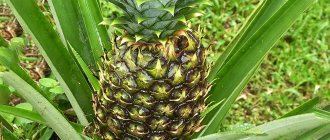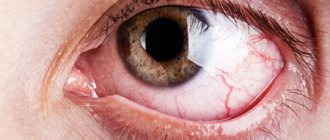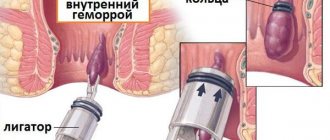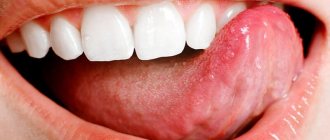White coating on the tongue usually perceived as a symptom of a disease. A person, as a rule, does not consider his language. In order for us to stand in front of the mirror, stick out our tongue and begin to look at it, there must be some reason that prompted us to do so - discomfort in the throat or oral cavity or some other dissatisfaction with our health. And then we discover a white coating on the tongue (or, as they sometimes say, that our tongue coated). However, don't be scared right away. Even a healthy person can have a white coating on the tongue. On the other hand, plaque on the tongue can indeed be a manifestation of the disease. Therefore, it is useful to know how pathological plaque on the tongue differs from plaque, which is considered a variant of the physiological norm.
Plaque on the tongue - what is it?
Plaque is a deposit on the tongue that covers it entirely or in places.
A light film on the taste organ can be detected in the morning. This is explained by the concentration of the following particles on the surface:
- food eaten the day before;
- unicellular microorganisms;
- epithelium.
In normal condition, the tongue has a light pink color and pronounced papillae.
The tongue is covered with a white coating - is this normal?
Examine your tongue in the morning before breakfast and brushing your teeth.
Do this on an empty stomach. If a white film is visible on the surface, do not worry too much. Try to remove it. If the plaque is easy to clean, there is no serious cause for concern. The following condition is considered normal:
- tongue is moist and of normal size;
- there is no pain in the mouth;
- no cracks or wounds;
- the natural shade of the mucous membrane is visible.
Carefully! If, after cleaning the mouth, the white layer only becomes thicker, this indicates the appearance of some kind of disease.
The following symptoms will indicate the existing pathologies :
- swelling of the organ;
- increasing its size;
- teeth marks;
- burning;
- increased secretion of saliva by the glands;
- painful sensations;
- insufficient hydration;
- foul odor;
- formation of large papillae at the root.
A dense white film that is difficult to remove indicates a malfunction of the organs.
Important! If these signs are detected, monitor your tongue for 7-10 days. If there is no improvement, consult a doctor.
What does plaque formation mean?
The causes of plaque are related to the oral cavity, internal pathologies and some other factors. The main thing is to avoid staining the organ with food coloring.
Dental reasons
If the tongue is covered with a white coating, this indicates the onset of infection or inflammation in the oral cavity. The most common pathologies include:
- Thrush (candidiasis) . It is the spread of a fungus observed in people with weak immunity, hypovitaminosis, and dysbacteriosis. The proliferation of pathogenic microorganisms on the tongue is facilitated by mechanical trauma to tissues, pregnancy, breastfeeding, and disorders of the thyroid gland. With thrush, the coating on the tongue looks like a curd mass.
- Caries . Its appearance is associated with plaque on the enamel. The destruction of dentin is accelerated by the consumption of sweets and non-compliance with the rules of cleaning the mouth.
- Stomatitis . The inflammatory disease is characterized by the formation of painful ulcers. Its causes are an unbalanced diet, allergies, stress, bacteria, and an imbalance of substances produced by the endocrine glands. Externally, plaque with stomatitis looks like milk or cottage cheese.
- Gonorrhea . A sexually transmitted infection causes pain in the throat and purulent plaque. A white film is visible on the tongue and palate. You can become infected through kisses, towels or dishes.
The color of the tongue may vary depending on the specifics of the disease and its neglect.
Causes not related to the oral cavity
The human body reacts differently to pathologies. Ailments that cause the accumulation of bacteria on the tongue include the following diseases :
- Stomach ulcer . One of the most common gastrointestinal pathologies is characterized by the appearance of scars on the mucous membrane. Provoking factors are stress, increased stomach acidity, prolonged use of medications, and alcohol abuse. Plaque on the tongue appears on the root zone and cannot be removed.
- Pancreatitis . Pancreatic disease is inflammatory in nature and is often caused by drinking alcohol and eating fatty foods. The tongue is white with a yellow tint. Deposits can be densely located throughout the organ.
- Gastritis . Inflammation of the gastric mucosa can be caused by infection, chemicals, malnutrition, chronic stress, hormonal imbalance, and medications. The plaque is white and has a yellow tint.
- Cold . If it occurs with complications, the tongue may turn white. The higher the temperature, the thicker the coating.
- Oncology . In cancer, the immune system is weakened. Malignant tumors are accompanied by weight loss, pain, and lack of appetite. Due to the high number of leukocytes, a white coating of dense consistency appears.
- Diabetes . Disorders of material metabolism require constant monitoring by a doctor and competent treatment. Plaque occurs against a background of nausea, stress, and dry mouth.
- Pathologies of the genitourinary system . Milk spots are located near the root of the tongue and on the sides.
- Liver failure . With this disease, a whitish or yellowish coating is observed that completely covers the tongue. It emits a pungent odor of ammonia.
- Respiratory tract diseases (bronchitis) . Snow coating is visible on the tip and along the lateral surfaces of the organ. A person complains of cough, weakness and fever.
- Gastric carcinoma . The plaque is dense and evenly distributed.
In rare cases, the symptom is associated with genetic and systemic diseases :
- Leukoplakia . Dead cells form plaque and affect the mucous membrane of organs. The pathology often occurs in smokers aged 30-40 years.
- Follicular keratosis . The skin disease provokes inflammation and the appearance of plaques. If you try to wipe off the white coating, wounds may appear.
- Brunauer syndrome . The disease is characterized by palmoplantar hyperkeratosis and problems in the process of keratinization.
If plaque is associated with one of these pathologies, treatment will be required from a specialized specialist followed by consultation with a dentist.
What diseases can be diagnosed by the tongue:
Complex therapy of chronic tonsillitis at the ENT Clinic of Doctor Zaitsev.
The method of complex treatment of the disease did not appear immediately. Our specialists have tried various methods of treating tonsillitis in practice. As a result of many years of experience in the study and treatment of chronic tonsillitis, this technique has taken root and is the most effective. It includes several stages.
The first stage is anesthesia of the tonsils. The tonsil is lubricated with lidocaine. The second stage is vacuum washing of the tonsils from caseous masses. The third stage is medicinal treatment of the tonsils using ultrasound. The fourth stage is irrigation of the tonsils with an antiseptic.
Stage five - lubricating the surface of the tonsils with Lugol's antiseptic solution. The sixth stage is physical therapy using a laser - this procedure relieves swelling and inflammation of the tonsils. The next stage is a vibroacoustic effect on the tonsils, due to which the blood flow rushes directly to the tonsils, and pathogenic substances are removed with it. The final stage of complex treatment is a session of ultraviolet irradiation, which heals the tonsils and fights pathogens.
The entire session takes about twenty minutes. To achieve a positive result, the patient usually needs five complex procedures.
Associated symptoms and what they indicate
In addition to the white tongue, serious diseases reveal themselves by other symptoms :
- burning in the stomach, headache and vomiting - gastric ulcer;
- pain under the left rib, dry mouth – pancreatitis;
- intestinal upset, nausea and vomiting, dry mouth - gastritis;
- itching, burning in the mouth, microcracks - thrush;
- swollen gums, grayish deposits on the inside of the cheeks – stomatitis;
- the appearance of holes in the teeth, bad breath, pain - caries;
- enlarged lymph nodes, hoarse voice, bad breath – gonorrhea;
- weakness, lethargy, sore throat - sore throat.
Important! Healers in the East believe that a specific area of the tongue is assigned to a certain organ. So, if plaque appears at the tip, it means that the heart hurts; at the root, the intestines are suffering.
Why might a white coating appear on the tongue?
At a certain age, a person may have specific reasons for the formation of white plaque.
The child has
Milky plaque on a child’s tongue may be due to the following reasons :
- Infection with helminths . Plaque is caused by parasites. They multiply in the body and greatly reduce immunity, causing the active development of bacteria.
- Tonsillitis . The inflammatory process of the palatine tonsils causes general weakness and sore throat. Infection occurs by airborne droplets.
- Pharyngitis . Inflammation of the mucous membrane causes pain and swelling of the throat.
- Angina . The disease is accompanied by weakening of strength and a temperature above 38 degrees. White plaque spreads to the palate, tongue and lymphoid tissue.
- Scarlet fever . The disease causes headache, high fever and skin rash.
- ARVI and influenza . The disease undermines the child’s immunity and disrupts overall well-being.
- Hypovitaminosis . A lack of nutrients causes fatigue, irritability and decreased appetite.
- Diphtheria . The infection is characterized by a snowy coating with a grayish tint. The tongue underneath is very inflamed. In case of diphtheria, it is prohibited to clean the affected organ, otherwise the epithelium may be injured.
Plaque in children in infancy appears as a result of hypothermia or poor hygiene. The child will cry and refuse to eat. A predisposing factor is the consumption of large amounts of sweets by a nursing mother.
Parents of the baby should not worry if the baby has just eaten a dairy product and has developed a white coating.
Reference! In medical practice, there is a condition in which the surface of the organ is painted with whitish spots of various shapes. It is called “geographical language” and does not bother the baby in any way. Usually the symptom appears during teething.
About the white coating on the tongue of a baby:
In older people
White tongue in older men and women is often associated with the presence of dentures on the teeth. Because of these devices, bacteria can develop that cause the following pathologies :
- stomatitis;
- cheilosis
Elderly people are not always able to take good care of their oral cavity. They are often diagnosed with various diseases and reduced immunity.
The appearance of plaque is facilitated by the use of steroids for the treatment of asthma, lack of vitamins, and diabetes mellitus.
In adults
In adult men and women, boys and girls, whitish clots on the tongue may be associated with the following reasons :
- AIDS . At the terminal stage of infection caused by the immunodeficiency virus, the tongue and horizontal wall are covered with a curdled mass, which can be easily removed with gauze.
- Syphilis . The disease is transmitted sexually. It is characterized by a white and dense coating on the end of the tongue and the wall of the throat.
- Scarlet fever . Plaque is visible on the tongue and throat. With this disease, a person is bothered by headaches, fever, and skin rash.
- Gonorrhea . Venereal pathology is caused by gonococcus. Pathogenic microorganisms infect the oral cavity and cause a foul odor and increased salivation.
- Bad habits . Drinking alcohol and smoking disrupt the gastrointestinal tract and cause dehydration. Often in the morning a person is bothered by dry mouth, plaque and a putrid odor.
- Eating certain foods or fasting . Some products provoke staining of the surface of the tongue and gums (curd, cheese, dairy).
- Glossitis . Inflammation of the tongue is usually recognized in men over 40 years of age. It is accompanied by profuse salivation and bad breath.
- Taking medications . The color of the tongue may change due to medications. Medicines affect the microflora of the oral cavity and provoke the growth of bacteria. Antibiotics are a common cause of tongue discoloration.
- Allergy . Plaque can be caused by toothpaste and mouthwash.
- Poisoning . It provokes nausea, digestive problems, and vomiting. May cause abdominal pain. In case of poisoning by toxins, the surface of the organ becomes covered with erosions and ulcers.
The risk group includes the following categories of people:
- pregnant women;
- women during menstruation (there is a risk of contracting candidiasis due to hormonal changes);
- smokers;
- hazardous workers.
People who have had radiation therapy are also susceptible to infection by a fungus that causes white plaque.
Types of tonsillitis.
The disease occurs in two forms - acute and chronic. Acute tonsillitis is an illness of an infectious nature and manifests itself in acute inflammation of the tonsil. The cause of exacerbation is staphylococci and streptococci. Acute sore throat in children and adults is also divided into catarrhal, follicular, lacunar, ulcerative-membranous and necrotic.
Chronic tonsillitis is a long-term, persistent inflammatory process in the tonsils. It manifests itself as a consequence of past inflammation, acute respiratory viral infections, dental diseases, and reduced immunity. Chronic exacerbation of the disease in adults and children occurs in three forms: compensated, subcompensated and decompensated. In the compensated form, the disease “dormants”; exacerbation of tonsillitis symptoms occurs infrequently. In the case of a subcompensated form of the disease, exacerbations occur frequently, the disease is severe, and complications are common. The decompensated form is characterized by a long, sluggish course.
Diagnostics
If you suspect a problem with your body, rush to see your local physician. It will help to find out the causes of the white deposits. Typically, primary diagnosis includes :
- examination of the tongue;
- general analysis of blood fluid;
- smear to check flora;
- Ultrasound of organs;
- urine check.
If a light coating has accumulated on your child's tongue, make an appointment with your pediatrician as soon as possible.
Differential diagnosis
In some cases, you will need to consult specialists working in the field of gastroenterology and endocrinology. In case of a fungal infection, an examination by a dermatologist will be required. In case of dental defects, the therapist will send the patient to the dentist.
The doctor must examine the patient and ask questions about his state of health and well-being , namely:
- Are there any changes in taste?
- Are there any bad habits?
- Does pain in your mouth bother you?
- What ailments worry you?
- When was the plaque first discovered?
- What drugs are currently in use?
A gastroenterologist may prescribe the following procedures :
- Ultrasound of the abdominal cavity;
- gastroscopy;
- fibrogastroduodenoscopy.
To clarify the cause of the white plaque, you will need a test for HIV, syphilis, hepatitis or gonorrhea, stool culture for dysbacteriosis and the presence of helminths.
The endocrinologist will check the thyroid gland and lymph nodes. Additionally, he may need the results of blood tests for hormones, ultrasound, CT or MRI of organs.
Reference! It is necessary to treat a specific disease, not a white coating.
Treatment
The stages of plaque treatment look like this:
- Eliminating the cause.
- Relieving symptoms.
- Strengthening the body and restoring immunity.
- Compliance with preventive measures.
To remove plaque from your tongue, use folk remedies and therapy prescribed by your doctor. Do these activities at home :
- beware of nervous tension;
- keep your mouth clean;
- practice aromatherapy.
First, you need to devote enough time to hygienic maintenance of the oral cavity. Clean the plaque from the hyoid bone to the tip, covering the entire surface of the organ. To do this, use a small spatula.
You can use a brush with a special pad that has a soft texture. Treat the enamel of the teeth, and then change the position of the brush and clean the mucous membrane.
The main thing is not to overdo it, so as not to accidentally induce vomiting. Sharp objects or iron spoons should not be used. After each meal, treat your mouth with disinfectants.
Important! A large number of bacteria are collected on the back of the tongue, because this part is little active. It needs to be processed more carefully.
When removing a light film from a baby’s tongue, it is necessary to take into account his age :
- For infants, remove plaque using a piece of clean gauze;
- For a baby over 1 year old, remove plaque with a toothbrush;
- For a child over 3 years old, prepare a rinse solution.
Do not try to cure the disease yourself, so as not to worsen the problem.
Video about getting rid of plaque:
Treatment options depending on the cause of the problem
Treatment methods for white plaque can be seen in the table:
| Reason for the raid | Treatment Options |
| Taking medications | Within 1-2 days after stopping the medications, the plaque will go away on its own |
| Worms | Eliminated using medications |
| Smoking and alcoholic drinks | Requires giving up bad habits |
| Diseases in the oral cavity | Local anti-putrefactive drugs are used, oral hygiene is maintained, and junk food is required. |
| Scarlet fever | A course of antibiotic drugs from the penicillin group and rinsing with antiseptics are indicated. |
| Hypovitaminosis | The introduction of the necessary vitamins into the body is prescribed. |
| Gastrointestinal pathologies | The gastroenterologist prescribes anti-inflammatory drugs, enterosorbents, a course of vitamins and prokinetics |
| Liver failure | Treatment involves eliminating stress, drug therapy, and a strict diet. |
Typically, plaque disappears from the surface of the organ when the primary factor is eliminated.
Washing the tonsils.
The procedure for washing the tonsils has a great positive effect, as a result of which pus is released from the lacunae and the medicine is administered. There are several ways to carry out the procedure.
The oldest, so to speak, ancient method is sanitation with a syringe. It is used quite rarely due to its low efficiency and traumatic nature, compared to the advent of more modern methods. The syringe is used when the patient has a strong gag reflex or very loose tonsils.
In other cases, a more effective method is used - vacuum rinsing with a special attachment of the Tonzillor apparatus.
But it is not without its drawbacks:
- the container into which the purulent contents of the tonsils are “pumped out” is opaque, and the doctor cannot see whether the rinsing is complete;
- The design feature of the nozzle is such that when the pressure necessary for complete rinsing is reached, the nozzle can injure the tonsils.
Our clinic for the treatment of tonsillitis offers its patients an alternative painless option for washing the tonsils using the improved “Tonsillor” nozzle - this is the “know-how” of our clinic. There are no analogues of our nozzle in other medical institutions in Moscow. It eliminates the disadvantages of a conventional nozzle: the rinsing container, which is suctioned to the tonsil, has transparent walls, and the otorhinolaryngologist can see what “comes out” of the tonsils. This eliminates unnecessary manipulations. The nozzle itself is non-traumatic and can be used even by children of school age.
Folk remedies
Folk remedies are used for rinsing and oral administration.
Infusions for oral administration
Anti-inflammatory for the gastrointestinal tract
St. John's wort
For herbal infusion, take the ingredients :
- St. John's wort;
- oregano;
- mint;
- lemon balm;
- 500 ml boiling water.
Preparation:
- Mix dry herbs together.
- 1 tbsp. l. pour boiling water over the mixture.
- After 2 hours, filter the composition.
Take 1 glass twice a day half an hour before meals. The course of therapy is 10 days.
For gastritis
Watch
For gastritis, boil the medicine from the following ingredients :
- watches;
- mint;
- yarrow;
- 200 ml water.
Preparation:
- Mix the herbs together.
- Take 1 tsp. spoon of mixture.
- Fill with water and leave for 15 minutes.
Take 50 ml three times a day.
With flax seeds
Flax seeds
To improve the functioning of the gastrointestinal tract and intestinal motility, try a medicinal decoction. It is prepared from the following components :
- 200 ml purified water;
- 3 tbsp. l. flax seeds.
Preparation:
- Fill the grains with water.
- Boil and simmer for 10 minutes.
- Wait until it cools down.
- After 20 minutes, drain into a container through a sieve.
Take half a glass of the decoction before meals.
Alcohol tincture with propolis
Propolis
Propolis tincture helps with stomach ulcers, gastritis, and liver diseases. It is prepared from the following ingredients :
- 10 g propolis;
- 90 ml of alcohol (70 degrees).
Preparation:
- Grate the chilled propolis and place it in a glass container.
- Fill with alcohol and cover with a lid.
- Place the tincture in a dark place for 2 weeks.
- Shake the contents periodically for better dissolution.
- After 14 days, filter the product.
Drink the tincture in the morning, 20-30 drops dissolved in 50 ml of water. The course of treatment is up to 1 month. It is permissible to buy a ready-made propolis-based product at the pharmacy.
To strengthen the immune system
aloe leaves
To strengthen your immune system, consume a decoction of the following ingredients :
- 150 g aloe leaves;
- 300 g liquid honey.
Preparation:
- Remove the thorns from the aloe.
- Mash the leaves of the plant thoroughly.
- Pour warmed honey over them.
- Leave the product to knock.
- Reheat and strain.
Take the medicine before meals, 1 tsp. spoon.
Antimicrobial infusions for rinsing
With salt and soda
Salt and soda
The simplest and most popular recipe involves the use of the following components :
- 1 tsp. soda;
- 1 tsp. salts (sea, iodized or table);
- 200 ml boiled water.
Preparation:
- Dissolve salt and soda in 200 ml of warm boiled water.
- Stir the grains.
- Cool the liquid.
Rinse your mouth 3-4 times a day. To enhance the effect, you can add 2-3 drops of iodine.
With oak bark
Oak bark
For the recipe you will need :
- 1 tbsp. l. oak bark;
- 300 ml boiling water.
Preparation:
- Pour boiling water over the oak bark.
- Cover with a lid and wait 2 hours.
- Strain the mixture and let it cool.
Rinse your mouth three times a day after each meal. The course of treatment is 2 weeks. Every day you need to prepare a fresh infusion.
With chamomile and sage
Chamomile and sage
An antiseptic decoction is prepared from the following ingredients :
- 1 tbsp. l. chamomile;
- 1 tbsp. l. sage;
- 400 ml water.
Preparation:
- Mix dry herbs and add water.
- Simmer the mixture over low heat for 15 minutes.
- Let the broth brew.
- Filter and let cool.
Use the decoction to gargle 3-4 times a day for 14-20 days. This is an excellent remedy against inflammatory processes.
Carefully! Herbal infusions can stain tooth enamel.
Oil rinse
The oil can eliminate food debris and bacteria.
Rinse your mouth with it for 10 minutes. After this, the surface of the tongue will become lighter. Olive, grape, and sunflower oil are suitable. You can rinse your mouth with rosehip extract, sea buckthorn extract, and aloe juice.
Pregnancy and chronic tonsillitis.
The health of the expectant mother and baby requires close attention. Complications caused by the disease can lead to dangerous consequences, including miscarriage or provoke premature birth. Self-medication in this case is dangerous: it is necessary to undergo treatment with an ENT specialist in the clinic. The doctor will prescribe washing the tonsils, treating them with ultrasound and gargling with antiseptics that are safe for the expectant mother. Physiotherapy is contraindicated for pregnant women.
If you are just planning a pregnancy, it is worth carrying out planned therapy for prevention in order to reduce the negative impact of pathogens on the tonsils. At the planning stage of pregnancy, it is recommended that both parents undergo an examination to reduce the risk of this disease in the child.
Friends! Timely and correct treatment will ensure you a speedy recovery!
Possible complications
If you consult a doctor in a timely manner, you can prevent the development of complications. If you neglect the pathology, you can provoke the appearance of plaque and face the following consequences :
- gastritis of the stomach;
- ulcer;
- bowel cancer;
- liver cirrhosis.
Complications also depend on the cause of the white plaque:
- Caries . In the future, pulpitis may appear, which is an inflammation of the nerve of the tooth.
- Stomatitis . If this pathology is not treated, it will become chronic. An aphthous form of the disease may develop, affecting a large area of the mucosa.
- Candidiasis . The fungus can spread to organs and cause nephritis, meningitis, and endocarditis.
- Pancreatitis . The disease can cause swelling of the brain and disrupt kidney function.
- Gastritis . Pathology can lead to a decrease in the secretory function of the stomach and impaired absorption of nutrients.
- Cold . The most common complications are otitis media, tonsillitis, rhinitis, sinusitis, tonsillitis.
- Diabetes . The disease can cause damage to the kidneys, liver and even death of the patient.
- Hypovitaminosis . Lack of vitamins can lead to disability.
The prognosis is made individually and depends on the patient’s health status and the advanced stage of the disease. In the case of pathologies such as HIV, it is unfavorable. It is only possible to temporarily support the body and continue to follow body cleansing procedures.
In the absence of quality treatment, serious complications can occur. Therefore, do not risk your health and at the first alarming symptoms, consult a doctor.
Why are tonsils needed?
The tonsils are an integral part of our immune system. And their main purpose is to protect the body from the penetration of pathogenic bacteria and viruses. In total, a person has six of them: palatine and tubal (paired), pharyngeal and lingual. By their names you can roughly understand in which part of the pharynx they are located. Their general arrangement resembles a ring. This ring acts as a kind of barrier for bacteria. When we talk about inflammation of the tonsils, we mean only the palatine tonsils (aka tonsils). Let's look at them in more detail.
If you open your mouth wide, then in the mirror you can easily see two formations that look like almonds - tonsils, these are tonsils. Each tonsil consists of small openings (lacunae) and winding canals (crypts).
Bacteria that enter the air, in contact with the tonsils, are rebuffed and are immediately disposed of, without having time to cause an outbreak of a particular disease. Normally, a healthy person does not even suspect that real fighting is taking place inside him. Now you understand the importance of the mission of the palatine tonsils. Therefore, a good otolaryngologist will never rush to recommend their removal. Although to hear from a doctor, speaking about tonsils: “They need to be removed!” - a common phenomenon in our time. Unfortunately, today not all clinics can offer high-quality treatment for tonsillitis, and sometimes the turnaround rate is off the charts. That is why it is sometimes easier for a doctor to brush it off and refer the patient for surgery.
Preventive measures
To prevent plaque formation, follow preventive measures , namely:
- clean your tongue and teeth regularly;
- if you have dentures, treat them with antiseptic;
- avoid close contact with people with candidiasis;
- After each meal, rinse your mouth with water;
- follow the vaccination schedule;
- drink drinks based on ginseng and lemongrass;
- carry out hardening under the supervision of a doctor;
- do not take antibiotics without a doctor's prescription;
- immune strength is constantly strengthened;
- do not get carried away with alcoholic drinks and smoking;
- promptly treat gastrointestinal pathologies;
- try to be less nervous;
- Visit your dentist 1-2 times a year for an oral examination.
Particular attention should be paid to your diet. It must be complete and balanced. Eat foods rich in vitamins and minerals, fats and proteins every day.
Include the following products in your menu:
- soups and broths;
- dairy products;
- whole wheat bread;
- fruits and vegetables;
- sauerkraut;
- river and sea fish;
- dried fruits;
- fiber;
- cereal porridge;
- jelly;
- natural juices;
- pasta.
Eliminate from your diet:
- soda;
- alcohol;
- spicy dishes;
- everything is fatty and fried;
- chocolate;
- candies:
- cakes;
- White bread;
- baked goods;
- smoked meats;
- canned food
The following rules for caring for dentures deserve special attention :
- Don't sleep with your dentures on at night. Handle devices with care.
- Clean their surface thoroughly before use.
- Store orthopedic structures in warm water or a special solution.
- Do not use powders for cleaning.
If you suspect problems with the oral cavity, contact your clinic immediately.
3 ways to clean your tongue:










